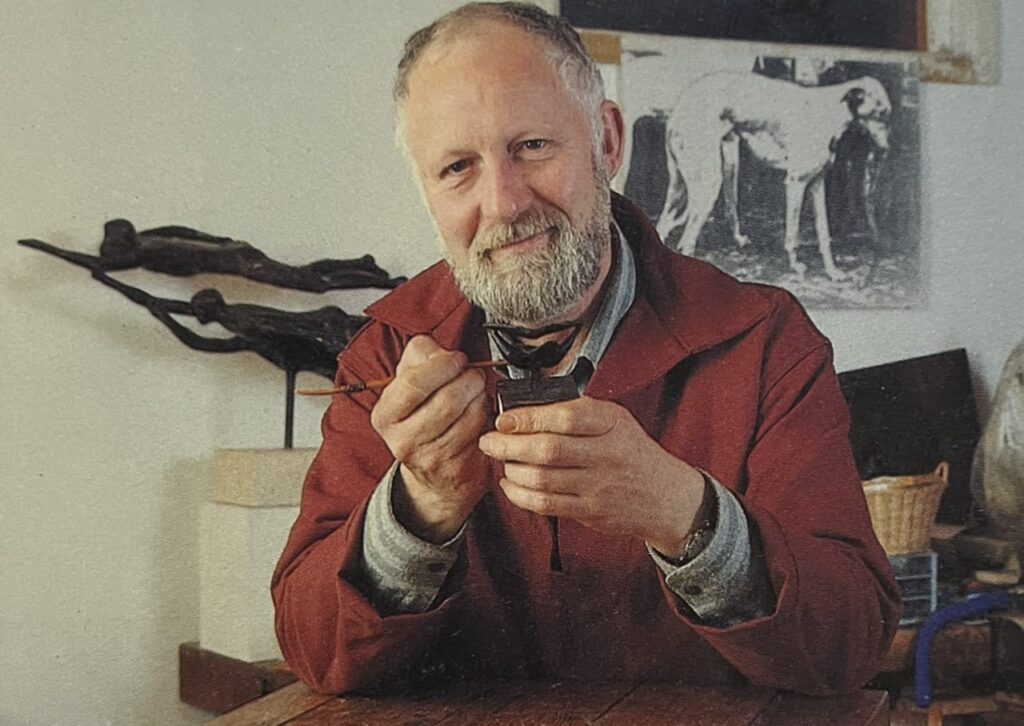Zaltbommel, the Netherlands, 1933
Ek van Zanten’s father was a violinist and his mother a painter. His maternal grandfather, J.G. Wattjes, professor of architecture at the Delft University of Technology, gave eight-year-old Ek a lump of clay with which he made his first figurines.
School of Arts and Crafts
In 1946, Ek Van Zanten took the entrance exam for the School of Arts and Crafts, aged just 13. That was considered, quite understandably, to be too young for him to join. Miss Co Werleman offered to teach him, at the Rijksnormaalschool, in a training course for teachers of drawing. Enrolled as a visitor, he took all the lessons that he thought would be useful for becoming a sculptor, such as art drawing, life drawing and art history. At the same time, he took weekly modelling lessons in the Zomerdijkstraat with the sculptor Johan Polet. Here, in Polet’s studio, he made the Mantle Baboon, based on his own drawings.
MANTLE BABOON IMAGE
Rijksakademie van Beeldende Kunsten
In 1948, Van Zanten took the entrance exam for the Rijksakademie van Beeldende Kunsten on the Amsterdam Stadhouderskade. He brought a folder with drawings of models and various small animal figures and was accepted. Jos Wong and Jan Wolkers were his classmates. His teacher was Piet Esser, professor of sculpture. From him, Van Zanten learned to depict movement — movement caught at the right moment. He worked a lot from models and made animal figures. He also took classes in the evenings. During the last two years of the course, he worked with both wood and stone.
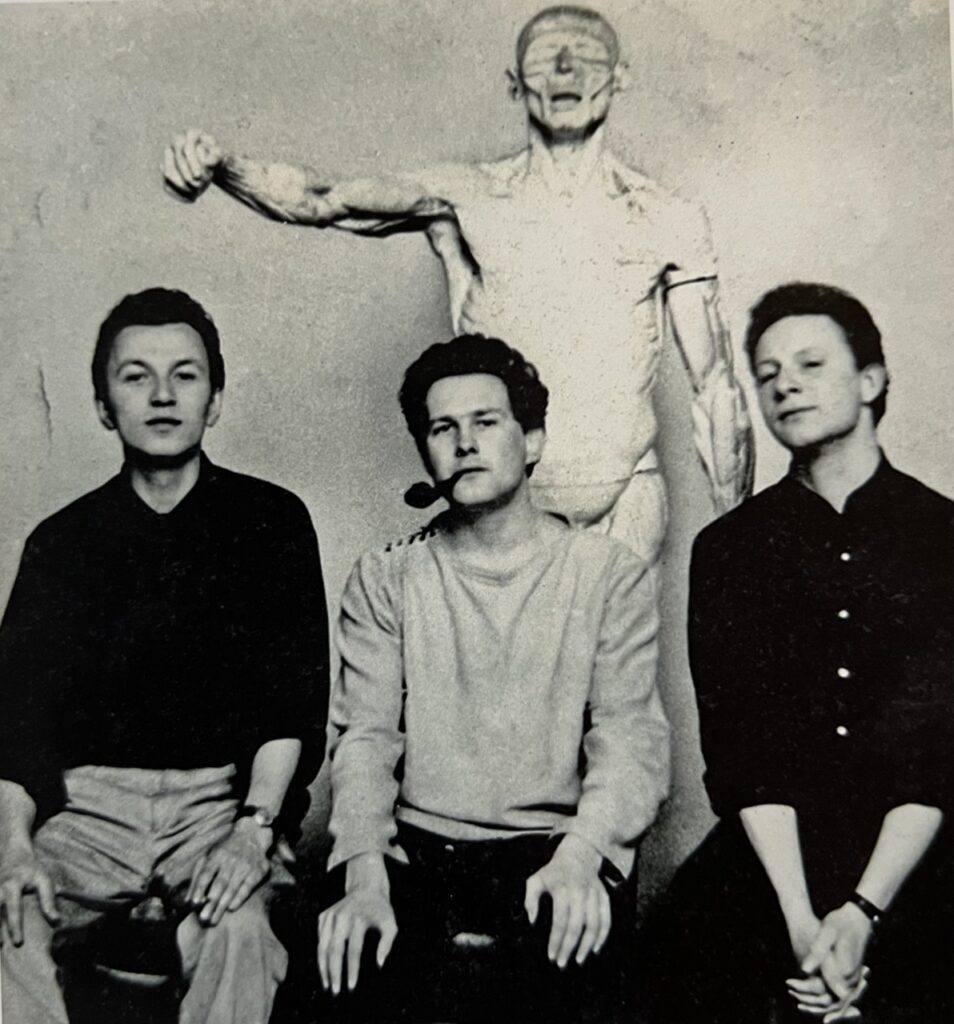
Ek Van Zanten met Jos Wong and Jan Wolkers
– at the Rijksakademie van Beeldende Kunsten in Amsterdam
In 1953, Van Zanten was awarded a grant at the recommendation of Esser and John Rädecker. With that, he went to the École Nationale d’Architecture et des Arts Décoratifs in Brussels, where he continued his education with Professor Charles Leplae, who was a student of Charles Despiau.
International Open Air Exhibition – Arnhem
In 1955, Van Zanten took part in the International Open Air Exhibition at Park Sonsbeek in Arnhem, with a large sculpture, Lady in Chair. That same year he won the gold medal of the Prix de Rome. He married the painter Annemarie Eilers and left for Rome in 1956, where he stayed until 1959. He received various commissions. He had great admiration for the sculptors Marino Marini and Emilio Greco. Van Zanten’s ideal was to be able to ‘do everything in the trade: portraits, monuments, medals, reliefs, ornaments for doors for example.’
Back in Amsterdam, he returned to the Zomerdijkstraat, to Rädecker’s former studio home. Here he made, among other things, the sculpture Europa and the Bull for the municipality of Hilversum, which acknowledged him with its culture prize in 1963.
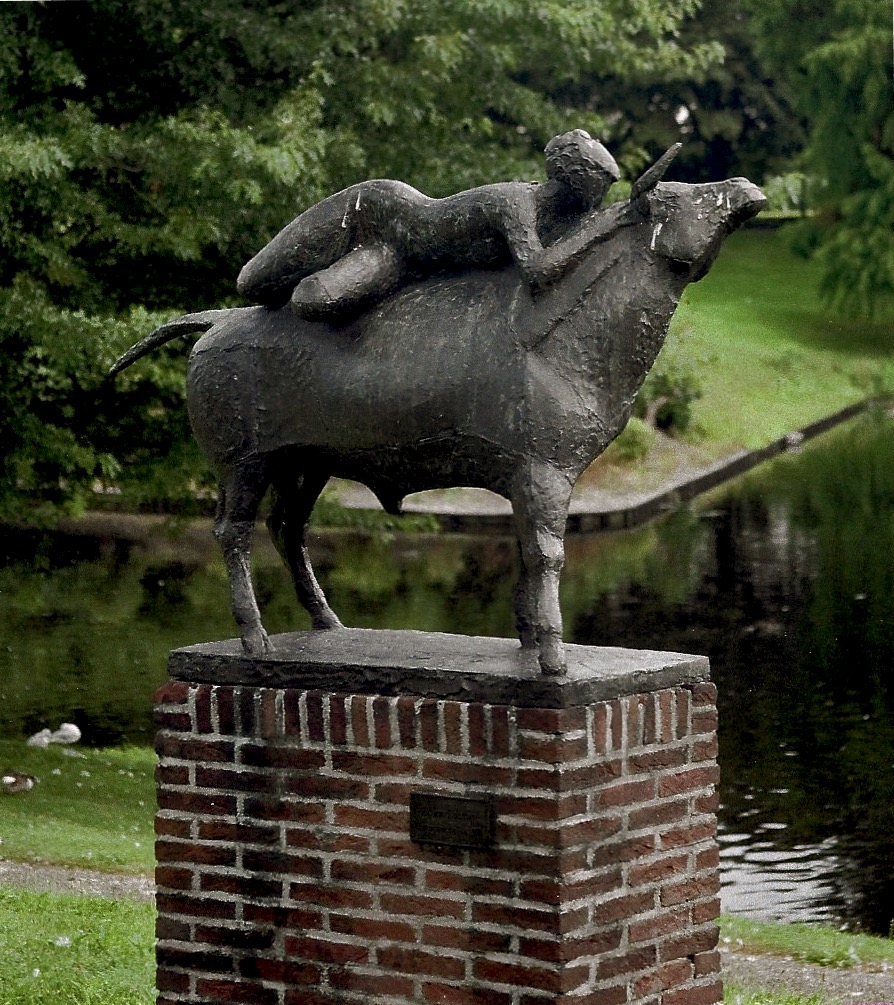
Europa and the Bull
– Laapersweg, Hilversum, 1961
Dijkwerkers
In 1961, the VPRO broadcast a television portrait of the sculptor, with Simon Vinkenoog as interviewer. Following this broadcast, Van Zanten received a commission from the Dutch embassy in Washington for which he made the large statue Dijkwerkers, a symbol of working together to hold back the sea. He made it in his studio in Naarden, where, by then, he was living. Another large commission followed, this time for the Maashaven in Rotterdam, also Dijkwerkers, a variation on the Washington statue.
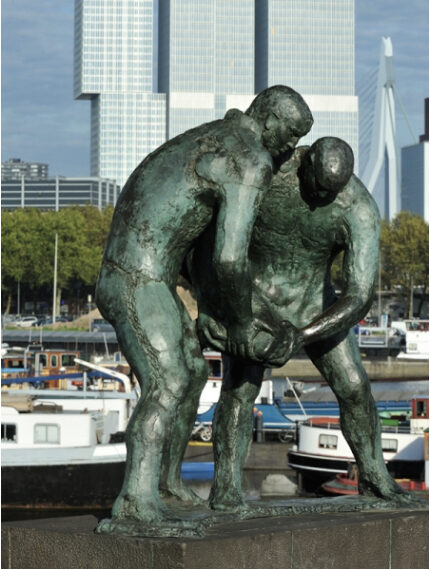
Dijkwerkers
– Maashaven Rotterdam, 1961
Sculptures by Ek Van Zanten
Van Zanten’s work was very diverse, as he had intended: medals, reliefs and portraits. He enjoyed depicting sportsmen: rugby players, baseball players and swimmers. He also made many animal figures, large and small, mainly horses but also the peacocks on the Pauwbrug in Leiden. His portraits include Piet Eilers, Eric Schneider and Elly Ameling. About thirty large and smaller sculptures by Van Zanten have been placed throughout the country.
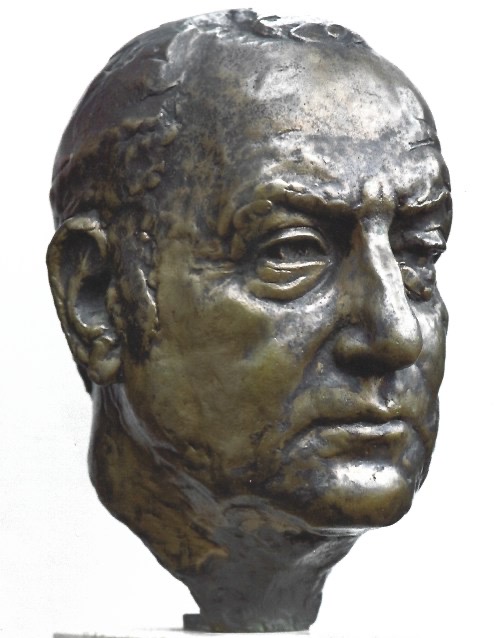
Portrait Piet Eilers
– Naarden, 1982
From 1971 to 1989, Van Zanten taught at the Minerva Academy in Groningen. He was involved in the Dutch Circle of Sculptors in Naarden and in the Gooi department of the Professional Association of Visual Artists from 1964 to 1974.
Literature
Sofie Schrameijer, Arnoud van Zanten, Marcella van Zanten, Frederic Bastet, Ek van Zanten. Sixty years of sculpting, Naarden, Het Badhuis, 2008
